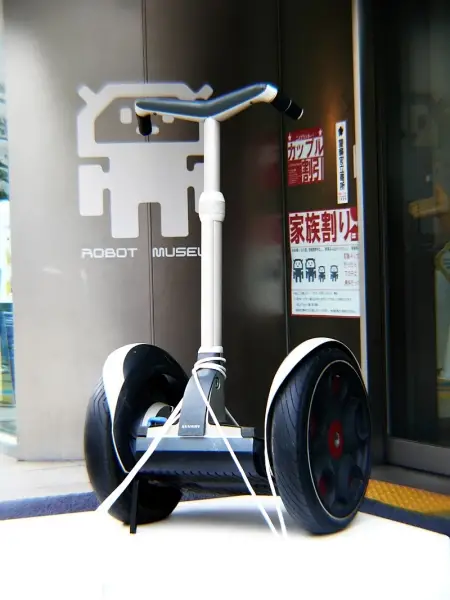
In the constant search to find more efficient, sustainable and comfortable alternatives to get around in urban environments, electric strollers have emerged as an innovative and promising solution.
These compact and agile devices are transforming the way people get around the city, offering a number of significant advantages compared to traditional means of transport.
What are electric strollers?
Electric strollers, also known as electric scooters or electric scooters, are personal mobility devices powered by electric motors. They are generally designed with a platform on which the user can stand, handlebars for control, and wheels that provide the necessary traction.
These compact vehicles are ideal for short and medium trips in urban environments, offering an agile and efficient alternative to public transport and conventional cars.
Features and specifications
Electric strollers vary in design, size, power, and specific features depending on the model and manufacturer.
However, some common features include:
- Electric motor: Most electric strollers are equipped with high-efficiency electric motors that provide the power necessary for travel. These motors can have different capacities, ranging from a few hundred watts to several thousand, determining the maximum speed and climbing capacity of the vehicle.
- Battery: The autonomy of electric strollers is determined by the capacity of the battery. Lithium-ion batteries are common in these devices due to their high energy density and light weight. Range can vary significantly between models, from a few kilometers to more than fifty in high-end models.
- Weight and Portability: Portability is an important consideration for many electric stroller users. Most models are lightweight and foldable, making them easy to transport and store when not in use.
- Braking system: Electric strollers are usually equipped with braking systems that may include disc brakes, drum brakes, or regenerative brakes. These systems are essential to guarantee user safety and allow controlled driving.
- Controls and display: More advanced models may include intuitive controls and integrated displays that provide information on speed, remaining range and other relevant data.
Engine types
Electric strollers primarily use direct current (DC) electric motors. These motors convert electrical energy from the battery into mechanical energy, which drives the movement of the wheel.
There are two main types of DC motors used in brushed and brushless electric strollers.
Both types of motors can vary in size, power and efficiency depending on the design and quality of the motor. However, brushless motors are gaining popularity in electric strollers due to their superior performance and lower maintenance requirements.
Brushed motor
This type of motor uses a set of brushes and a commutator to control the direction of electrical current through the motor winding. The brushes are in contact with the commutator and change polarity periodically, causing the shaft to rotate.
Although brush motors are relatively simple and inexpensive, they tend to have a shorter lifespan and generate more heat and friction compared to other types of electric motors.
Brushless motor
This type of motor eliminates the brushes and commutator, instead using an electronic controller to control the direction and speed of rotation.
Brushless motors are more efficient, durable and require less maintenance compared to brush motors. Additionally, they produce less heat and offer better performance in terms of speed and power.
Advantages of electric strollers
Electric strollers offer a number of significant advantages compared to other modes of transportation, especially in urban environments:
- Energy efficiency : Being powered by electric motors, electric strollers are inherently more efficient than internal combustion vehicles. This makes them a more sustainable and environmentally friendly option.
- Flexibility and agility : Due to their compact size and ability to easily maneuver in tight spaces, electric strollers are ideal for urban travel, allowing users to avoid traffic jams and access places that are difficult to access for other vehicles.
- Reduced operating cost : Compared to cars, electric strollers have much lower operating costs as they require less maintenance and the cost of electricity is significantly lower than that of gasoline or a conventional electric vehicle.
- Lower environmental footprint : By promoting the use of electric energy instead of fossil fuels, electric strollers contribute to reducing greenhouse gas emissions and improving air quality in urban environments.
- Convenience : Electric strollers offer a convenient and fast way to get around the city, allowing users to reach their destination without needing to find parking or rely on public transportation.
Models and prices
Electric strollers are available in a wide variety of models, from basic, budget-friendly options to high-end models with advanced features. Some of the most popular manufacturers include Xiaomi, Segway-Ninebot, Razor, and Gotrax, among others.
Prices can vary considerably depending on factors such as brand, power, range and additional features. For reference, prices can range between 200 and 1000 euros for mid-range models, while high-end models can exceed 1500 euros.
Below we show you a comparison table between different models:
|
Model |
Price (€) Approx. |
Price (USD) Approx. |
Weight (kg) |
Battery Capacity (Wh) |
Autonomy (km) |
Maximum speed (km/h) |
|
Xiaomi Mi Electric Scooter Pro 2 |
450€ |
$500 |
14.2 |
474 Wh |
45 |
25 |
|
Segway Ninebot Max G30 |
700€ |
$780 |
18.7 |
551 Wh |
65 |
30 |
|
Razor E Prime Air |
400€ |
$450 |
10.9 |
250 Wh |
15 |
24 |
|
Gotrax GXL V2 |
300€ |
$335 |
12 |
264 Wh |
20 |
25 |
|
Dualtron Thunder |
2,000€ |
$2,230 |
43 |
2,058 Wh |
120 |
80 |
|
Inokim Quick 4 |
1,200€ |
$1,340 |
17.5 |
624 Wh |
45 |
25 |
|
Nanrobot D6+ |
1,500€ |
$1,675 |
34 |
1,008 Wh |
70 |
65 |
|
Speedway Leger |
800€ |
$895 |
16 |
374 Wh |
35 |
35 |